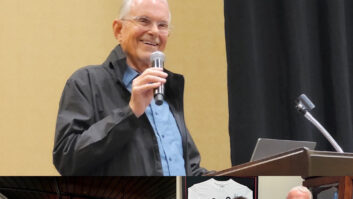Arlington, Va. — The Consumer Electronics Association (CEA) and Consumer Electronics Retailers Coalition (CERC) repeated statements formally reiterating their contention that accelerating and expanding the Federal Communications Commission’s (FCC) digital television tuner mandate will sharply raise prices on smaller-sized television sets, causing disruption in the marketplace and harming low-income consumers.
The statement was part of comments the groups filed jointly with the FCC in response to a Further Notice of Proposed Rulemaking (FNPRM) on digital television receiving capability.
The FCC proposed on June 9 to accelerate the current mandated timetable for the inclusion of a DTV tuner in television sets of all sizes from July 1, 2007, to Dec. 31, 2006, and said it would extend the requirements to cover television receivers smaller than 13 inches.
In their filing, CEA and CERC cautioned that the accelerated date would be extremely difficult for manufacturers to meet, and stated that the requirements would force a sudden increase in TV prices, which would impact low- and fixed-income Americans the most.
“Accelerating the tuner mandate deadlines for all sets would have the unfortunate result of decreasing the number of DTV tuners in the marketplace, which clearly does not further the goals of the Commission nor the goals of the DTV transition as a whole,” said Gary Shapiro, CEA’s president/CEO. “By contrast, the current and anticipated July 2007 date allows time for economies of scale to develop fully. This will lessen the sticker shock for consumers, allowing these products a chance to compete against less expensive, tuner-less alternatives.”
The associations asserted there is insufficient basis for the FCC to change the existing July 1, 2007 date for 13-inch to 24-inch TVs.
This date has been relied upon in the product and resource planning of manufacturers and in the merchandising and marketing plans of retailers. Moreover, a change in this date to a date any earlier than March 1, 2007, would be not only unwarranted; it would be infeasible for the general population of TV receiver manufacturers, who require a minimum of 18 to 24 months to plan, develop and deploy new equipment.
Even if manufacturers were able to meet a foreshortened production schedule, a date any earlier than March 2007 could result in a complete inability for many manufacturers to produce products in this category, and cost increases for those that do become available, that the marketplace would be unlikely to sustain, the CEA said.
“This development would defeat the purpose of the tuner mandate itself,” said Shapiro.
CEA and CERC noted that current market forces and the regulatory regime to date have proven successful. CEA forecasts that the industry will this year sell 9 million DTVs with an integrated over-the-air (OTA) digital tuner, 16.7 million in 2006, 27 million in 2007, and 33 million in 2008.By 2009 CEA projects that 97 million DTV tuners will have been sold, translating to 86 percent U.S. household penetration of OTA tuners.
With respect to new receivers with screen sizes less than 13 inches, CEA and CERC explained that since the deadline on sets 13 inches to 25 inches has not taken effect it would be difficult to know at present, the feasibility and practicality of including DTV tuners in TVs under 13 inches.They noted that it currently appears that the cost and development burdens on manufacturers, and the impact on consumers, would outweigh any possible benefits.
In addition, the CEA and CERC response pointed out, “TV receivers with digital tuning capability are, by and large, clearly identified as such in advertising and point of display materials. The main issue is not if labeling is occurring but whether consumers can determine for themselves under what circumstances they will need a tuner for digital OTA signals.”













